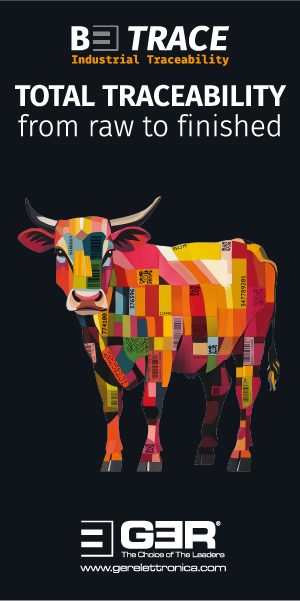Market Intelligence - 14.09.21
Macroeconomics
On the financial markets, special attention is being paid at the moment to the national banks and the end of the policy of cheap money. The relief of national budgets cannot remain the eternal excuse for a zero-interest-rate policy.
No one could have known that the problems of international transport logistics would also have a considerable price-driving effect, but as is so often the case, Murphy’s Law (‘Anything that can go wrong will go wrong’) also applies here.
We can probably still expect some surprises in price developments in the near and medium term. In many states, taxes and duties will increase and it is very likely that the disposable income of ordinary people will tend to decline in the next few years. The trade unions and workers’ representatives will counter this with higher wage demands and this would be the classic situation of a wage-price spiral, which in every economic theory is an essential pillar for inflation.
Nervousness in the financial markets is also on the rise. While the stock markets have known almost only one path for the last 20 months, upwards, the markets are now in a sideways movement and, if the signs are not deceptive, the correction will not be too long in coming. Investors are not yet ready to sell shares on a large scale and are really only waiting for the clear signal that interest rates will rise again.
Until then, smaller savers not only have to reckon with higher prices and charges, but also have to live with the fact that their savings cannot be invested in any low-risk or acceptably profitable way.
International commodity prices also moved within very narrow ranges. The price of oil fell somewhat in line with the general scepticism about further economic development, and for the other important commodities, supply and production issues played the most important role and caused the greatest price fluctuations.
The US dollar is also moving in very narrow ranges, but has tended to strengthen somewhat against other major currencies in recent days.
Leather Pipeline
The supply chain in the leather industry starts at the slaughterhouse and the price that is agreed there must reflect what will be a reasonable price for the final product at the end of the chain. The slaughter industry always tries to achieve maximum revenue for its by-product and there is nothing wrong with that. However, the laws of the market also dictate that a successful value chain and an attractive end product are necessary for trade in the raw material to be viable.
If the cost of transport and the cost of production increase significantly, this must be compensated for, unless significant productivity increases are achieved. The increase must be compensated for by lower material costs or by higher sales prices, unless significant productivity increases are achieved.
It is always surprising that a professional analysis of the situation and an agreed adjustment based on facts cannot be achieved. The market that focuses exclusively on direct pricing between buyer and seller in direct negotiation is the most honest way, even if it does not always please everyone. All attempts to change this and to find other ways can be considered failures to date.
The last 16 months have demonstrated this once again. The massive drop in global production of consumer goods at the beginning of the pandemic led to an inevitable, extreme drop in prices for cattle hides as food and meat production continued almost unabated. Almost stable supply met massively reduced demand with the corresponding consequences and very low prices for hides and skins. The recovery of demand, with simultaneously reduced stocks in the pipeline combined with very low commodity prices led to a strong increase in demand, starting in China.
This, in turn, led to price rises. What starts out as rational and in keeping with sound economic theory soon becomes more emotional and speculative. Then, at some point, raw material prices can become disconnected from reality and if this is accompanied by sharply rising prices for transport and production, the problem builds up disproportionately. We locate this point in the price development somewhere in the first quarter of this year.
We have already established that the market cannot be moderated by arguments; it has to be left to its own forces. These forces are very real and have no regard for wishes or individual fates. The price adjustment for leather, as well as for raw materials, has become considerably more complicated, because the time factor can suddenly no longer be planned and is nevertheless of decisive importance for many consumer goods. The price of a product suddenly becomes much less important when availability is a decisive factor. You cannot sell and quickly deliver a product you do not have. This approach may seem academic to some, but for many leather products today it plays a significant positive or negative role.
Referring to the cowhide market, we think that is very well understood at the moment. While there is a lot of slaughter in the US and the export share is much higher than in the EU, the market reacts with a delay but still reflects the situation. In Europe, the situation has been completely different in recent months, with slaughter seasonally very low and, at the same time, the issue of availability and supply capacity supporting the leather industry with orders even during the holiday season. This meant that the supply and demand balance was correspondingly different. In the US prices dropped and buyers in Asia are taking the opportunity to do everything they can to bring prices back down to a level that is competitive and attractive for them. However, nobody knows exactly where this level is.
In Europe, on the other hand, neither high meat production nor a large stockpile put pressure on prices over the summer. As a precaution, most suppliers and tanners had already concluded contracts into September. The low slaughter numbers did not lead to the otherwise often seen summer accumulations. Suppliers were able to sell the hides quickly.
With these different positions and opposing price trends, a price delta has now developed between the markets, which will have to be closed sooner or later. Basically, the markets always react first to pain and that means to unsold stocks, which can mean a price and a quality risk. At the moment, this is not expected in the short term in Europe and ultimately makes price adjustment extraordinarily difficult and even delayed, especially for the markets in Asia.
What is particularly worrying with regard to the Asian markets are the influences that arise from delayed acceptance of finished goods owing to transport problems. What were initially dismissed as isolated incidents are becoming a bigger problem day by day. Many suppliers have not been able to ship their finished products for export according to the agreed schedule and this is leading to an increasing number of cases of cancellations or non-acceptances. This does not even include cases where there are purely commercial and cost reasons to walk away from agreed contracts.
If one also considers that, as in the case of Vietnam for example, there are also delivery failures due to interruptions to production, it becomes clear how badly supply chains are disrupted for the most diverse reasons and thus the flow of goods, for whatever reason. The consumer will only notice this fully in a few months, but the consequences along the supply chain are far greater than some may imagine today.
It is advisable for everyone to think about the problems of their partners before or after them in the chain. The dependencies are great, and in the case of large industrial chains such as in the automotive industry, they are also being discussed in public. For many other supply chains, it is still taken for granted that what is ordered today will be delivered tomorrow. For the global economy this can develop into a very serious problem, because, as is well known, the reason for a fall in sales is irrelevant when it comes to the bottom-line result for a business.
The really annoying and difficult-to-predict question is when the transport problems will be solved again. Owing to the current situation, the shipping companies have placed orders for extremely large container ships and most of these will be available within the next 24 months. If this leads to overcapacities in the transport sector, it would not be the first time. If that happens this time, it will still take two years to get there and the road towards it will be bumpy.
For the time being, many have decided to increase inventory in storage. This requires storage capacity, then financing. Ultimately, this also increases the risks that are associated with stockpiling. What effect this has on the supply chain in the leather industry we will see next year.
It has become almost impossible to deal objectively with a supposedly climate-friendly mishmash of opinions. BMW’s ‘Vison Circular’ explicitly points out that the company relies on recycled materials, does not use composites and wants to support the circular economy. How this can be mentioned in the same breath as a renunciation of leather as a material is only further proof that the company thinks little and produces a lot of greenwashing mainstream. The only thing to note is that the leather industry has certainly missed the opportunity to counteract these developments at an early stage. And a problem that is still European is slowly being carried into other markets by global corporations into the other markets that have, until now, been relatively unaffected by such marketing trends.
In China, prices for blue split remain under pressure; we assume it will take a few more weeks for clarity to emerge for the winter season.
The sheepskin and lambskin business is suffering massively from the transport problems. As our regular readers know, we were relatively positive about this material because, last year, there was clearly more real leather to be seen, especially in fashion. There was hope that this would also spread to the mass market. The raw material was extremely cheap and was therefore competitive again. The gates were wide open for an expansion of the use of leather. However, as the supply chain for clothing and its production is very long and leather is, of course, still a very fashion-dependent material, the big retailers were not willing to take risks; they already had enough problems with the pandemic.
The coming weeks will be a difficult time for raw material suppliers because, in some markets, especially the US, there has been considerable selling pressure. This has already led to significant price reductions since the beginning of the summer. At the moment, customers and suppliers are desperately trying to find solutions.
As the supply and demand situation in the various regions of the world is currently more varied than normal, there is obviously a need for significant adjustment. By mid-October, we can expect this tension and divergence to subside.
Overall, however, there are many good reasons to believe that the price pendulum had already swung too far in the second quarter.












